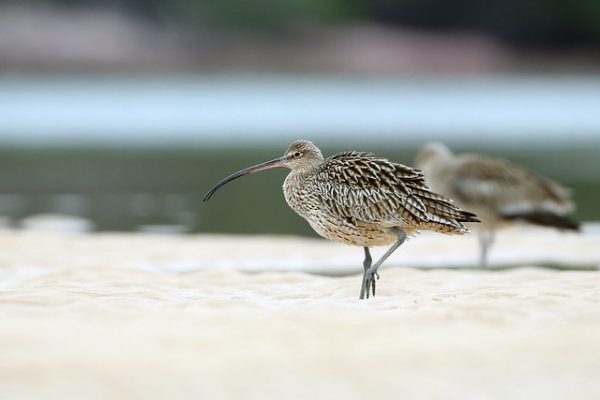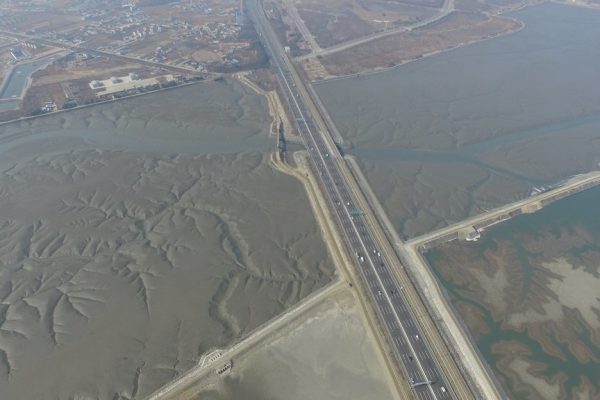-
News from the Field: Moving to the release aviary and the obligatory bear photo
20 July 2017 Roland Digby, Saving the Spoon-billed Sandpiper On Friday 14 July, we finally got the first couple of broods of birds out into the release aviary. Because of the storm we couldn’t put the birds out as early as we’d hoped (Wednesday 12 July), so the first couple of broods were a bit […]
Continue reading -
What’s happening at Slimbridge?
19 July 2017 Baz Hughes, Saving the Spoon-billed Sandpiper I think you might have all realised that there’s been a bit of blog silence on the Slimbridge spoonies so it’s time to update you. Put bluntly, we didn’t get eggs this year, but it wasn’t for lack of trying! Moult into summer plumage commenced in […]
Continue reading -
Heavy rain brings debris to Higashiyoka-higata, Saga, Japan: A letter from Saga City
EAAFP Secretariat A series of heavy rains in the northern part of Kyushu Island, Japan early this month caused landslides and flooding, resulting in at least 31 deaths with a number of people still unaccounted for. The total rainfall of 778 mm in 9 hours in Asakura City, Fukuoka Prefecture was equivalent to the highest […]
Continue reading -
News from the Field: Eggs hatched and release pen ready to go
13 July 2017 Roland Digby, Saving the Spoon-billed Sandpiper At 15:30hrs on 10 July, our 30th and last chick hatched! Although we didn’t expect all 34 viable eggs to hatch, we had hoped for 32. Unfortunately that wasn’t the case, with one dying just as it started to hatch and two others just before pipping, […]
Continue reading -
News from the Field: Hatching update from 3 July
3 July 2017 Roland Digby, Saving the Spoon-billed Sandpiper On 1 July, clutch A pipped and were all moved from the Hemel incubator to the AB Newlife hatcher. As of 3 July, a total of 24 of the 34 viable eggs have pipped and been moved over and we expect the remaining 10 eggs in […]
Continue reading -
Raising awareness: 922 Korean students take part in Black-faced Spoonbill Nature School
EAAFP Secretariat The Black-faced Spoonbill (BFS) Nature School began in April 2016 with the goal of raising awareness of students in Incheon, Republic of Korea, on the importance of migratory waterbirds and their habitats. The School, run by local science teachers, is led by Ms. Sunjeong Nam of the Incheon BFS Network, with the technical […]
Continue reading -
EAAFP Flyway Network and Ramsar site wetland at risk in Australia
BirdLife Australia A development proposal that could destroy part of the Moreton Bay EAAFP Flyway Network Site [EAAF013] and a Ramsar Site in Australia has, alarmingly, advanced to the next stage in the approvals process, despite international commitments by the Australian government to wetland protection and migratory waterbird conservation. Moreton Bay is an internationally significant […]
Continue reading -
North-West Australia Wader and Tern Expedition 2018
The Australasian Wader Studies Group (a special interest group of BirdLife Australia) has organized a series of special expeditions over the years in order to undertake comprehensive long-term studies of the waders and terns in North-West Australia. The next expedition will take place from Monday 12th February to Tuesday 6th March 2018. For more information, […]
Continue reading -
Opinion piece: Green Korea Incheon: More reclamation? No to the Yeongjong District 2 development plan!
Read in Korean: Joohee Park, Secretary General of Green Korea Incheon Yeongjong-do, the island where Incheon airport is located, is a place where I have seen thousands of shorebirds. The Yeongjong-do Mudflats act as an important resting place for migratory shorebirds during their long and tiring journeys between breeding sites and non-breeding sites. The Yeongjong-do […]
Continue reading -
News from the Field: 38 eggs!
29 June 2017 Rebecca Lee, Saving the Spoon-billed Sandpiper On 24 June, the final clutch of eggs was collected from the plain at the foot of the moraine hills close to the village, making a total of 38 eggs collected. This is amazing because at one point earlier in the season when the floods were […]
Continue reading



